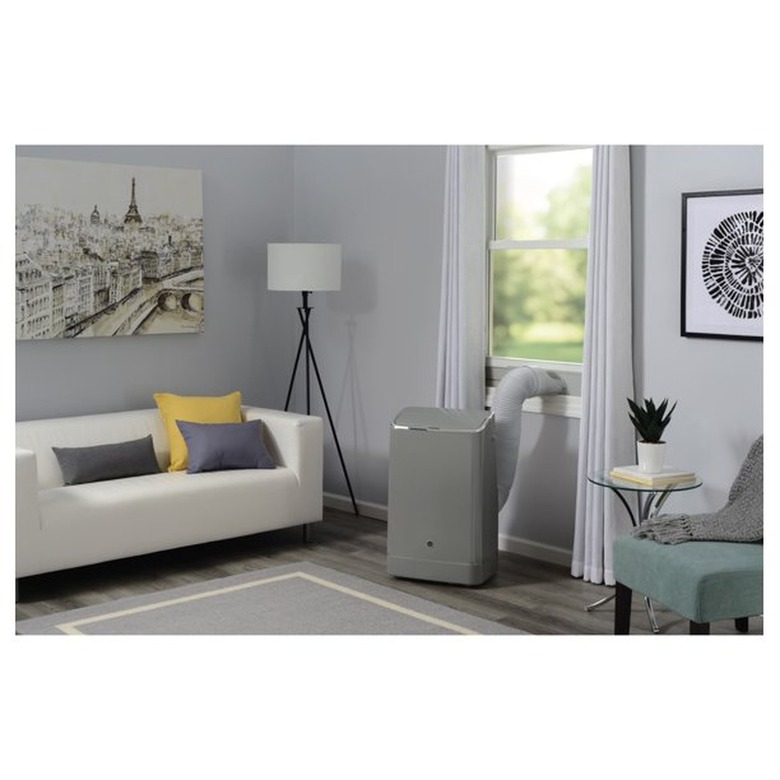How To Clean A GE Air Conditioner
Even though some thrive on the satisfaction they get from whipping out a toothbrush when any kind of cleaning challenge presents itself, it's easy for others to find excuses for not cleaning the things that aren't on display, like the inside of appliances. If you're into avoidance and need to clean a GE air conditioner, take heart. It's easy.
The main thing to remember is that you should clean your portable GE unit regularly so it will perform well, use less electricity, and be less likely to become a safety hazard. These instructions are the most basic cleaning instructions recommended by GE. If they don't apply to your unit, consult your owner's manual.
Things Needed
-
Soft, water-dampened cloth
-
Soft, dry cloth
-
Model-appropriate replacement filter (when necessary)
-
Shallow pan (at least 1-quart size)
How To Clean an A/C Unit
1. Clean the Air Conditioner Exterior
You should clean the exterior of your portable GE air conditioner regularly to ensure absence of buildup that could cause blockages. Avoid using liquid cleaners or spray cleaners. Do not use scouring pads, solvents, chlorine bleach, ammonia, strong detergents, or abrasive cleaners.
- Unplug the GE portable air conditioner.
- Make sure the unit is on level ground to prevent floor damage from water tank spillage.
- Wipe the cabinet with a soft, damp cloth, making sure to clear dirt and pet hair from vents.
- Dry the air conditioner's exterior with a soft, dry cloth.
2. Clean or Replace the Filter
Dirty air filters are a drag on the performance of your portable air conditioner, making it difficult for the unit to circulate air and cool the surrounding area. Cleaning them weekly and replacing them when necessary ensures that your unit operates efficiently. Some GE portable air conditioner models use two filters.
- Make sure the unit is unplugged.
- Remove a rear filter panel by lifting the upper filter panel.
- Remove side filters by pulling the tabs and sliding the filters from the back of the unit. Any secondary filters are accessed after main filters have been taken out.
- Replace any filters that need replacing.
- Vacuum the filters that aren't being replaced or wash them with cool water.
- Gently shake the filters to get rid of excess water if they were washed.
- Replace the filters.
3. Drain the Water Storage Tank
Pay attention to the indicator on your unit that lets you know when your storage tank is full of condensed water. Draining it is easy.
- Make sure the unit is unplugged.
- Position a shallow pan at the back of the unit below the lower drain near the bottom.
- Remove the rubber plug and cap.
- Let the water drain out of the tank.
- Reattach the plug and screw the cap back onto the unit securely.
- Plug in the unit to restore power.
The Rundown on Portable Units
The Rundown on Portable Units
If you're thinking about buying a portable air conditioning unit and are on the fence about whether it's a good idea, it may help to take a few things into consideration.
The best feature is that they can be moved from room to room with ease, and they need no installation. Smaller, more affordable units are appearing on the market with greater frequency, and at the end of the season or simply when you want it out of the way, you can store your unit out of sight.
Portable air conditioning units, like window units, make more noise than central air conditioning, which is a drawback for some. They release some warm air into the room, counteracting the cooling process and leading to longer running times, which contributes to higher electric bills. Portable units are also less effective at cooling large rooms.
